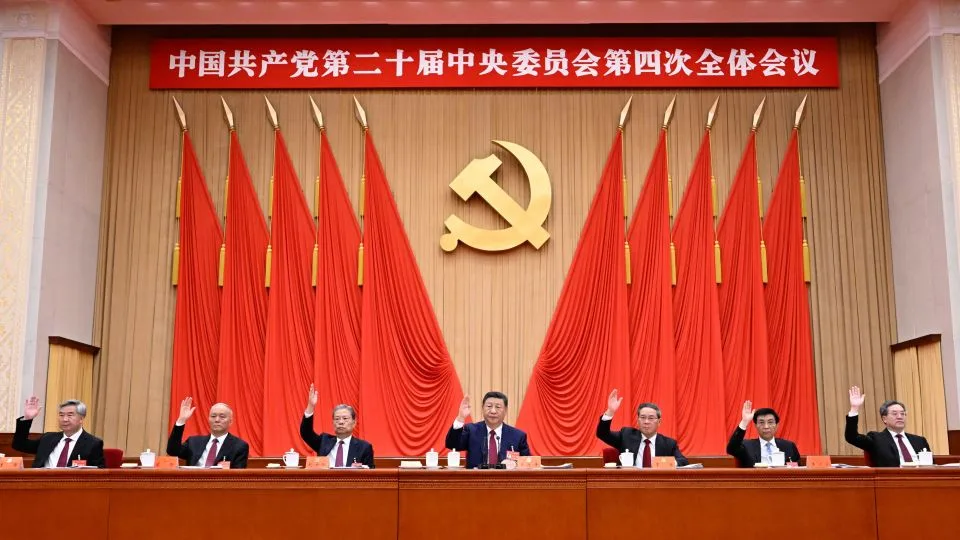Xi Jinping’s Strategic Vision: Planning Beyond Political Chaos
In Beijing’s Great Hall of the People, Chinese leaders have concluded a high-stakes meeting. They outlined the nation’s next five-year economic and strategic plan. The blueprint is set to redefine China’s path toward self-reliance in technology, manufacturing, and defense. This comes while reinforcing its ideological and competitive edge against the United States. At a time when Washington faces internal political paralysis, including recurring government shutdowns and polarized fiscal battles, Xi Jinping’s government sees opportunity in contrast.
China’s leadership has consistently emphasized what it calls its “systemic advantage”—the ability to craft and execute long-term strategies without the disruptions of multiparty politics. Officials at the Communist Party Central Committee’s Policy Research Office describe this centralized approach as “a key political advantage of socialism with Chinese characteristics.” By leveraging centralized control, China claims to possess the stability required to advance complex national goals. This occurs even as other countries oscillate between conflicting policies.
This “long-termism,” as Chinese state media brands it, not only showcases Xi’s confidence in centralized governance but also reinforces his belief that Western democracies are too reactive. They struggle to maintain global influence. As the U.S. government struggles with short-term budget disputes, Beijing uses the moment to project a narrative of competence and continuity. This narrative appeals to developing nations watching the two superpowers compete for leadership in global affairs.
The Five-Year Plan: Building Technological Self-Reliance and Global Power
Although full details of the upcoming five-year plan will not be revealed until its official ratification by China’s National People’s Congress in March, preliminary documents highlight an ambitious agenda. Xi Jinping’s government has pledged to accelerate scientific independence, strengthen national defense, and expand influence through global trade and innovation.
Zheng Shanjie, head of the National Development and Reform Commission, detailed China’s future industrial priorities—quantum computing, biotechnology, hydrogen energy, nuclear fusion, brain-computer interfaces, embodied intelligence, and sixth-generation mobile communication technologies. Each of these sectors aligns with the broader national vision of achieving technological sovereignty by 2035. This ensures that Chinese innovation no longer depends on Western imports or semiconductor access.
At the same time, the plan emphasizes “vigorously boosting consumption” and improving social security to tackle domestic inequality and “involution.” The internal competition has driven economic burnout. These initiatives also support China’s ambition to become a leading global supplier in green technology, electric vehicles, and advanced manufacturing. These areas are already promoted through policies outlined on China’s Ministry of Industry and Information Technology website.
Beyond economics, the blueprint underscores a rapid modernization of China’s military. It aims to “accelerate the building of advanced combat capabilities.” This dual focus on prosperity and preparedness embodies Xi’s long-term vision of national rejuvenation. Economic power sustains military readiness, and vice versa.
The Long Game: From Economic Stability to Global Influence
For Xi Jinping, the five-year plan serves as more than an economic framework—it is a declaration of ideological and strategic endurance. Chinese state media contrasts the stability of one-party governance with what it calls the “shortsightedness” of Western democracies. They point to protests, partisan gridlock, and fluctuating trade policies in the United States. A recent editorial in People’s Daily declared that China “views the whole country as one chessboard” and advances “steadily along the correct direction,” implying that its governance model is inherently superior.
Observers note that this confidence stems from tangible achievements. Over the past decades, China has lifted hundreds of millions out of poverty and become the world’s second-largest economy. It now leads the global push toward clean energy. The country’s success in scaling industries such as electric vehicles, where it dominates production and export markets according to BloombergNEF, highlights how centralized planning can create industrial giants. However, this sometimes occurs at the cost of oversaturation and economic inefficiencies.
Critics, however, warn that the very strength of China’s system—its top-down control—can also lead to inflexibility and misjudgment. Historical examples like the Great Leap Forward reveal the dangers of rigid planning when political ambition overrides market feedback. Yet Xi’s administration remains undeterred, portraying long-term state planning as essential for “national rejuvenation.” As global instability rises and trade tensions with the U.S. deepen, China’s leadership insists that the ability to plan decades ahead constitutes a “vital political advantage.”
For Xi, this ideological conviction extends beyond economics into geopolitics. As he prepares for future summits with Western leaders, including U.S. officials seeking to recalibrate trade relations, Beijing’s confidence lies in its commitment to continuity. While the U.S. State Department navigates shifting alliances and short-term legislative cycles, China is scripting a century-long narrative of resilience. This narrative could redefine the global balance if successfully executed.
In essence, the latest five-year plan embodies more than policy—it is a statement of intent. Xi Jinping’s China is betting that the discipline of long-term planning will ultimately outlast the volatility of Western politics. Whether that strategy ensures dominance or breeds new vulnerabilities remains one of the defining questions of the 21st century.







